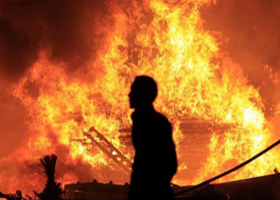

What marks a country as vulnerable?
We are mostly looking at countries from the macroeconomic point of view. The extent to which we use geopolitical risk is as an add-on to our normal assessment of countries that are vulnerable economically. What we attempt to do here is look at the risks that policies that might be helpful for the economy are going to be impeded in some way by the political environment.
What brings these incipient instabilities to the fore, what’s the trigger?
To be fair, we don’t actually try to predict triggers, which we find too difficult. What we try to do is look at whether the underlying environment makes a country more vulnerable to a trigger. There, we’re looking for things that are more macroeconomic in nature, for example if they have a large fiscal deficit, if they’re running a large current account deficit, whether their exchange rate is over or undervalued, whether there are incipient financial risks, so that a trigger causes capital flight or some other type of instability.
Does private-sector debt also play a role?
Absolutely. As we know, unsustainable public-sector debt can perhaps lead to a sovereign crisis. But as we’ve seen in the great financial crisis, you can have a financial crisis that has an impact on the fiscal sector. Private debt, in the form of corporate debt or household debt in, say, the mortgage markets, can of course affect the financial sector, particularly the banking sector, and then those financial risks often end up on the fiscal balance sheet. So, for instance, Ireland had a banking system that, when it had difficulties and needed to be recapitalized by the government, was literally too large for them to handle from the fiscal side. Those kinds of risks can arise in the private sector. Even if they don’t appear to be a political risk in the true sense, they can impact the fiscal sector and become a political risk.
Which comes first, the political crisis or the fiscal crisis?
I think the two go hand in hand — it’s difficult to assess which one comes first. If a country is in tough shape in terms of running large fiscal deficits — perhaps because they are not able to collect taxes or revenues are being siphoned off due to corruption — that ultimately could lead to a political crisis. Or perhaps some government officials are trying to take advantage of their position so that, when the stakes get high enough, a political disruption ensues. The populace may decide at some point that they are unwilling to support governments that show these practices and they rebel. One can think of the uprisings in Egypt or Venezuela or other countries in recent years.
Is contagion a possibility?
I think it is. You know contagion is a difficult term to define. In this context, I think of contagion as something (usually negative) where some elements of one country look similar to those of another country. Investors and others get nervous about these other countries that look very similar to the country that had the negative event—even if there is no concrete reason for the same event to occur. That’s what we see on the financial side and I think it’s also probably true for the political side, where one might see a weak government in a region and maybe see things that look somewhat similar in another country and then there’s suspicion that if something happens in the first country, it might spread. I think that the type of “pure” contagion is difficult to measure. Still, we’re trying to measure and isolate political risks by looking at a number of socio-economic and political risk factors that might indicate some sort of political stress and then see whether or not there are common stress factors that lead to disruptive behaviour across a number of countries simultaneously.
How do you put all the data together?
We produce a variable from available data that we call the political stress index. Then we ask ourselves, at what level and at what threshold does political stress become a political crisis? We arbitrarily say that high levels of political stress – maybe the highest data points from the stress index — represent something we could call a political stress event.
Then we take that set of events and think about other socio-economic variables or other types of political variables that indicate whether there might be stress. Among those variables might be something like internal conflict or ethnic tensions or lack of democratic accountability. Then we see whether or not these variables are related to predicting this political stress using a classic model (a logit model) to evaluate the probabilities of such events. Then we produce a predicted probability of political stress and. if that probability is moving up, we are going to pay more attention to the other underlying economic vulnerabilities. So this would add a layer to what we would otherwise do to look at economic vulnerabilities. If the economic vulnerabilities are high, and the probability of a political stress event is also high then that country would be regarded as more dangerous or more vulnerable than other countries for which the probability is low or not increasing greatly.
We use that technique for other types of risks too. So we have a predicted value for a financial crisis and we have one for a balance of payments crisis, as well as for sovereign crisis. We use the same methodology for those kinds of crises as for the political stress event.
To learn more about the Global Investment Conference, please visit the conferences section of the CIR website. If you are interested in attending this event, please email Alison Webb to be considered, as limited space available.
